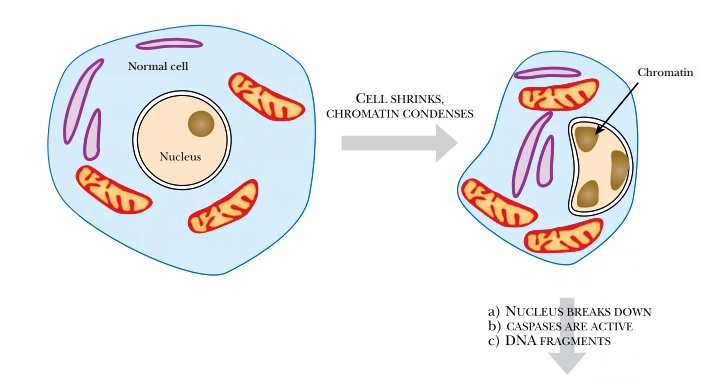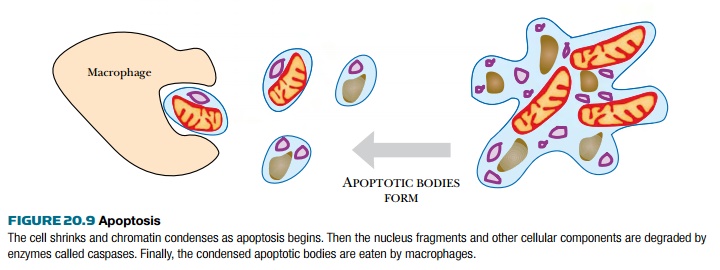Chapter: Biotechnology Applying the Genetic Revolution: Aging and Apoptosis
Apoptosis Is Programmed Cell Death
APOPTOSIS
IS PROGRAMMED CELL DEATH
Have you ever wondered what happens to a
tadpole’s tail when it turns into a frog, or what happens to all the extra
white blood cells after you are over an infection? What happens to senescent
cells that are defective and beyond repair?
All of these processes involve apoptosis,
or programmed cell death . The tadpole’s tail and fins do not simply fall off.
Rather, each cell in the tail undergoes programmed cell death, which allows all
the proteins, lipids, and nucleotides to be reused. When you get sick,
yourimmune system makes new cells to fight off the infection. If these extra
cells just burst and died when the battle was over, the body would have quite a
mess to clean up! Instead, the cells calmly activate genes that initiate a
controlled and deliberate death program. Apoptosis occurs in an orderly manner
with genes regulating each step of the process. Few to none of the cytoplasmic
components are released, and neighboring cells engulf the neatly packaged debris.
All the components are recycled.


During apoptosis, the dying cell undergoes a process that is morphologically distinct and recognizable by sight. This was first described in 1972, but not until the past 10 years has the process been analyzed genetically. First, the cell membrane starts to form blebs, or regions that balloon out ( Fig. 20.9 ). The nucleus shrinks, condenses, and divides into smaller fragments. Finally the entire cell shrinks and divides into large condensed fragments called apoptotic bodies . Other cells engulf the debris by phagocytosis, thus cleaning up the remnants. The proteins, lipids, and nucleic acids are all digested and recycled. Apoptosis is very distinct from other types of cell death. When cells are damaged from external injury, oxygen starvation, or energy depletion, they undergo necrosis . Necrotic cells swell because their osmotic balance is perturbed. Their proteins are denatured and degraded. Finally, the cell ruptures and dies. Necrosis is a messy way to die and often elicits an immune response. Apoptosis has many advantages over these other types of cell death. The stepwise program allows the cell to halt the process if necessary. In addition, the final result does not alter the physiology of the entire organism. In necrosis, bursting cells can cause collateral damage to surrounding tissue, making the situation worse. The immune system must clean up the mess and the tissues must be repaired and replaced. In contrast, apoptosis does not elicit an immune response unless the cells are dying in response to a viral or bacterial attack.
Related Topics